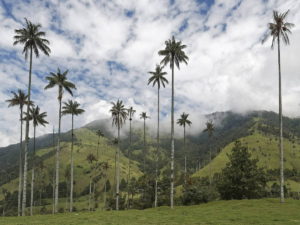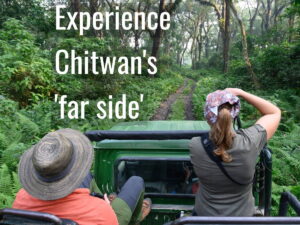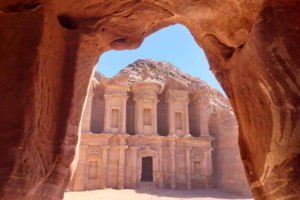Immersed in the Amazon
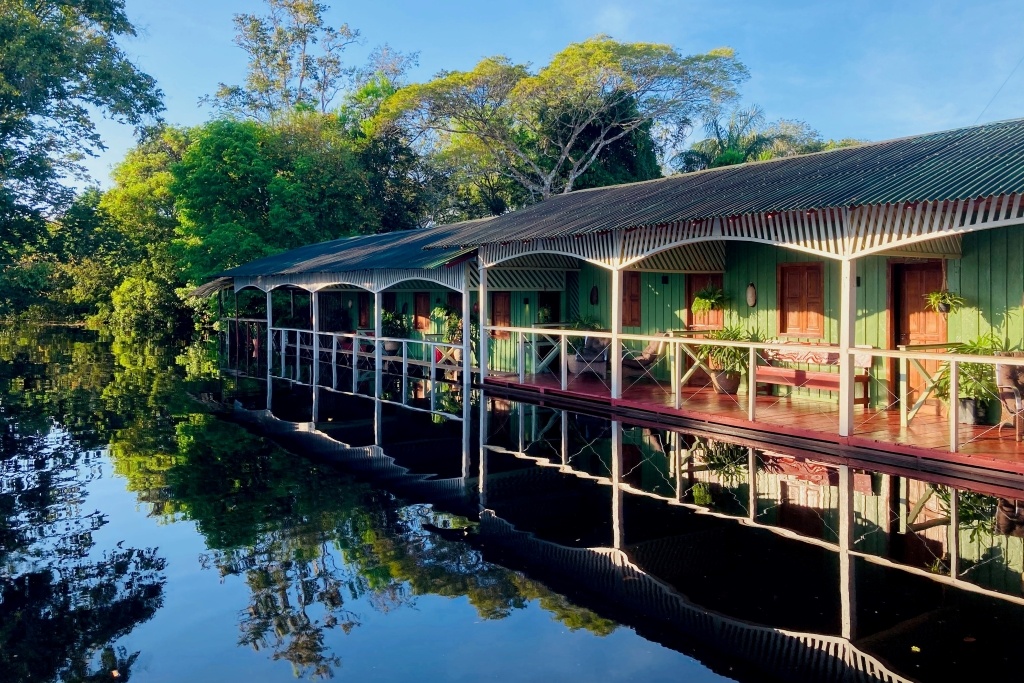
Experiential tourism allows people to actively and meaningfully engage with a place’s history, people, culture, food, and environment.
I recently journeyed to the Brazilian Amazon and experienced three days immersed in the environment and culture with the help of Wellington, my interpretive guide.
I hope this blog post inspires others to take similar experiential journeys. I believe that not only are they more memorable for travellers but they also encourage the tourism sector to be more sustainable.

The inside track
Angelo Sciacca is a sustainable tourism consultant working “at the crossroads of sustainability, tourism and community development”. For his PhD at Edinburgh Napier University, Angelo is focused on “the barriers and enablers to a circular economy faced by tourism businesses”.
Manaus is the capital of Brazil’s Amazonas state and the gateway to the Amazon River and rainforest. Approaching by plane is an emotional experience as you glimpse lush rainforests, the start of the famous river, and the Rio Negro. Upon arrival you notice as you leave the airport the density and diversity of the forest that surrounds the city.

Manaus has a strong, welcoming character. Street food, chaotic neighbourhoods, busy harbour, and outstanding architecture make this one of my favourite cities in Brazil.
The highlight of Manaus is its surrounds: the Amazon Rainforest, the Rio Negro, and the Amazon River. The encontro das águas, where the Rio Negro meets the Rio Solimões and where the Amazon River officially starts, is a short boat ride from the city. The colour of the two rivers is significantly different. The Rio Negro’s dark waters are due to less sediment churned up by its slower flow.
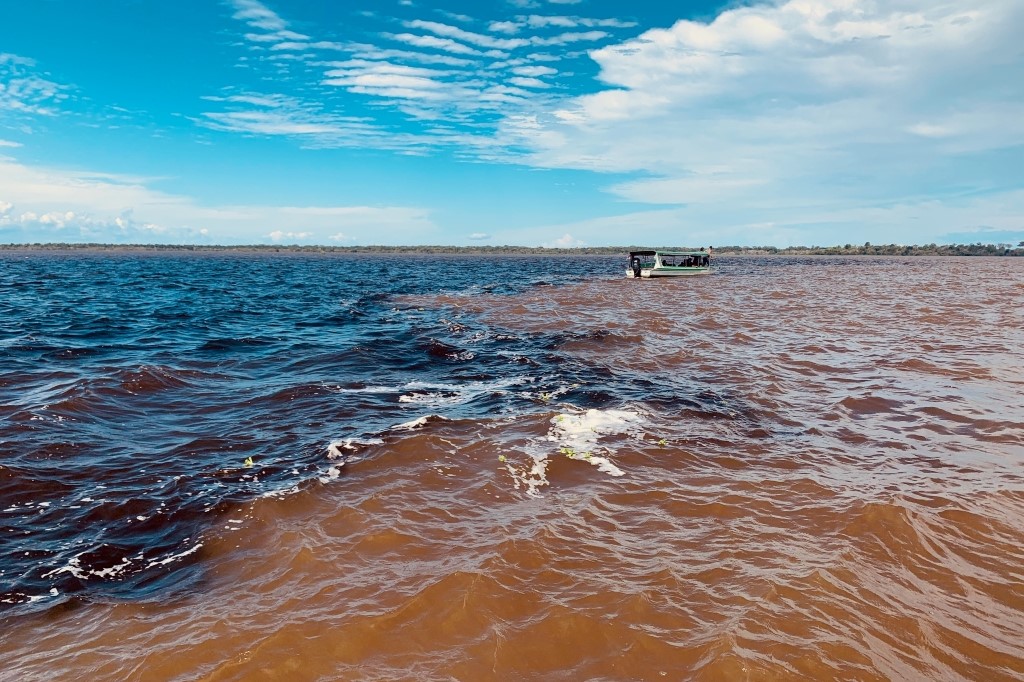
Although day tours give you a taste of the beauty of the Amazon, for an unforgettable experience you should head to one of the forest lodges in the Rio Negro. I stayed at the Manati Lodge. Here you can fully experience the rainforest, the river, and the culture of the communities living on its banks. The lodges here are mostly only accessible by boat, and the trip is an experience in its own right.
During my three-day stay at Manati, I was accompanied by a local guide, Wellington, who was born and raised in a nearby village, or comunidade. An inspiring source of local and traditional knowledge, Wellington has been working as a tour guide since the early-mid 2010s and he definitely knows how to make your stay memorable. All of the activities he organised were highly experiential and gave me the opportunity to be part of them.
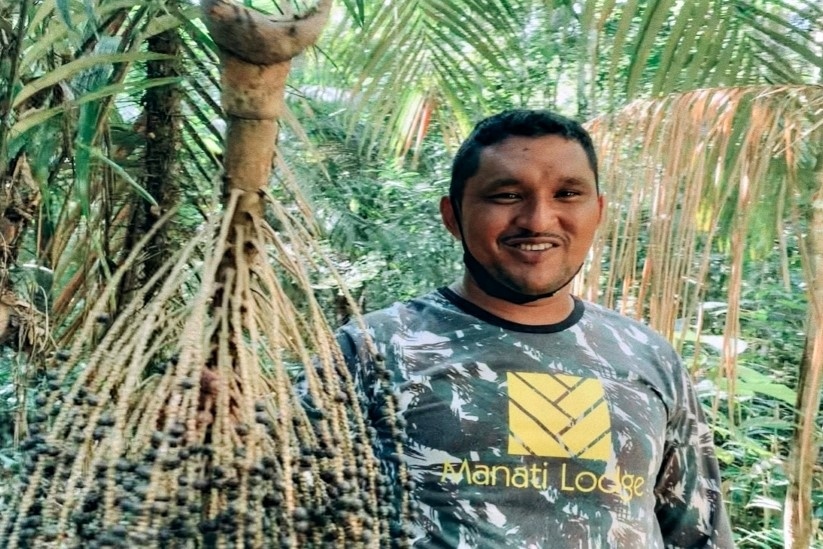
During our forest hike, for example, Wellington applied an integrated interpretation approach. This means that not only did he guide us in how to find and observe wildlife responsibly, but he also shared some of his rich repertoire of local stories and legends associated with much of the forest’s fauna and flora. Wellington’s approach allowed me to appreciate more intensely my moments inside the rainforest, while simultaneously preserving his culture’s intangible heritage.
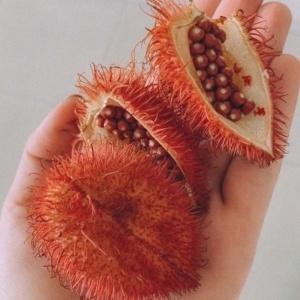
I learned about the past and current uses of some the forest’s natural resources, such as the plants and trees used to produce glue, natural remedies, and building materials. I was invited to taste forest foods, such as the açaí and other fruits and seeds, and to learn about some unusual traditional uses of some plants. The seeds of the urucu fruit, for example, produce a beautiful bright red dye when squeezed. The indigenous peoples of the area use it for painting and decorating their bodies, crafts, and tools.
Another unexpected use of a plant is the one in the video below. The sound was traditionally used by hunters to attract birds.
It was really fascinating for me, despite my substantial travel experience, to see the deep and respectful integration of the local communities with their surrounding forest ecosystem. Wellington helps preserve much of this knowledge while sharing it with visitors in a very inspiring way. His wildlife watching activities are mostly unplanned, improvised by Wellington based on his forest skills and his knowledge of the forest and its seasons. He would knew when and where would be a good occasion to spot sloths, monkeys, many bird species, and caimans.
My journey with Wellington continued with other cultural experiences, such as traditional harvesting and cooking methods. I visited a family that produces cassava flour and participated in the entire production process, from taking the cassava root, grating it with a traditional machine, removing its juice, and filtering the flour. We cooked the tapioca on a mud-made stove and topped the meal with forest-sourced Brazil nuts.
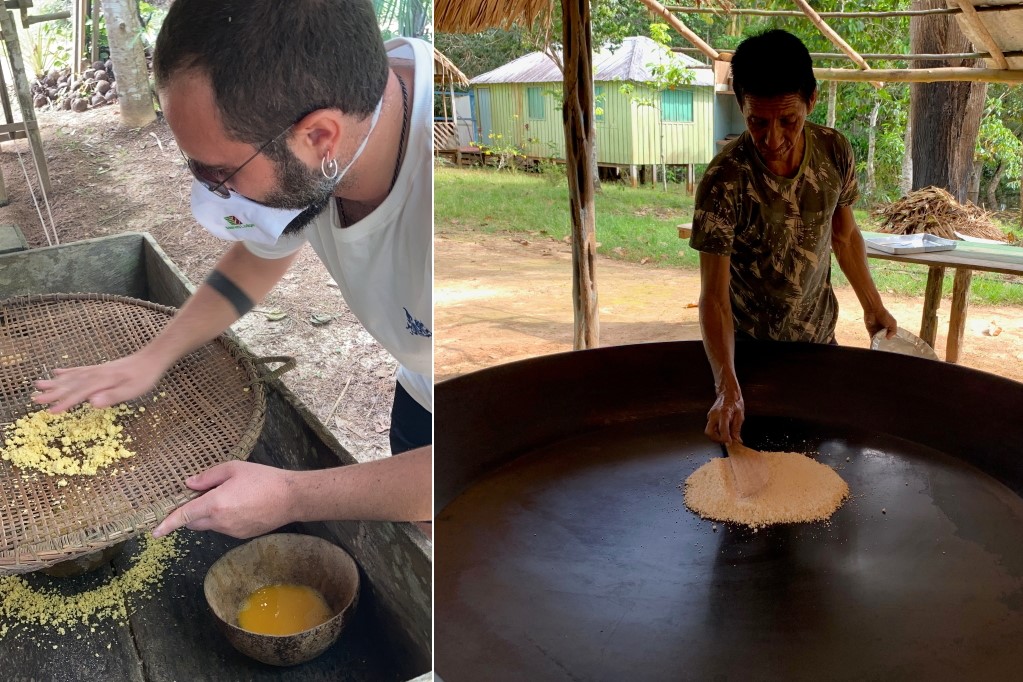
My three days at Manati Lodge were filled not only with nature- and culture-based activities but also lots of interesting stories. Local stories are journeys through time; the fourth oft-forgotten dimension of a place.
My journey to the Brazilian Amazon taught me much about experiential travel in practice. Above all, it allowed me to appreciate once again the love and pride that drives community guides to preserve their culture and heritage for future generations. In the Amazon they do so with an outstanding respect for the natural world.
I would recommend a journey to the Amazon to anyone. However, I would strongly recommend engaging a local guide as passionate and knowledgeable as Wellington. He helped make my experience of this part of the world truly amazing.
Where is this?
Manati Lodge
Lago do Acajatuba, SN, Rural Zone,
Manacapuru – Amazonas, Brazil
Tel: +92 995 256 792 | E‑mail: [email protected]
Featured image (top of post): Manati Lodge on the Rio Negro. Pic © Angelo Sciacca.


